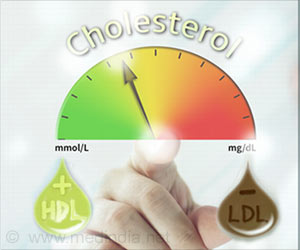Patients admitted to the hospital for sudden, worsening chest pain or a certain type of heart attack have better outcomes if they undergo early invasive treatment.
Patients admitted to the hospital for sudden, worsening chest pain or a certain type of heart attack have better outcomes if they undergo early invasive treatment rather than being treated conservatively, a new review of clinical trials has found.
“Available evidence suggests that an early invasive strategy is superior to a conservative strategy,” said lead author Michel Hoenig of the Centre for Research in Vascular Biology at the University of Queensland in Australia. “However, we are far from having as solid an answer as we need given the prevalence and costs associated with treating this disease.”The review appears in the current issue of The Cochrane Library, a publication of The Cochrane Collaboration, an international organization that evaluates research in all aspects of health care. Systematic reviews draw evidence-based conclusions about medical practice after considering both the content and quality of existing trials on a topic.
The researchers looked at two heart conditions: unstable angina, which is acute, accelerating chest pain, and a kind of heart attack known as non-ST-elevation myocardial infarction, which is diagnosed in part by ECG.
Together, these conditions account for 1.4 million hospital admissions yearly in the United States, far surpassing admissions for other cardiac disorders. Although the risks of death, heart attack and other unfavorable outcomes vary widely among patients with these disorders, cardiologists classify them as a single acute coronary syndrome.
The Cochrane reviewers pooled findings from five major randomized controlled trials that compared an early invasive approach to a conservative approach in patients with this acute coronary syndrome.
They looked at differences in the death and heart attack rates both during the initial hospitalization and in the long term. They also looked at differences in rates of intractable angina and rehospitalization during the first six to 12 months after the initial event.
Advertisement
In the early invasive approach, a cardiologist looks for narrowing or blockage in the coronary arteries with angiography, an imaging test using a cardiac catheter. Patients with significant obstruction are treated with angioplasty, in which a balloon is inflated to widen the artery, followed by insertion of a stent to keep the vessel open. Some patients with narrowing or blockage instead require bypass surgery.
Advertisement
Supporters of the conservative approach maintain that, once patients have been stabilized with medical therapy, noninvasive tests can be used to identify high-risk patients who would be most likely to benefit from invasive treatment.
Of study participants, patients in the early invasive group were about one-third less likely to have uncontrolled chest pain or to be rehospitalized six to 12 months after hospitalization. Based on the two trials with the longest follow-up, patients in the early invasive group also had a 25 percent lower risk of dying or suffering a second heart attack two to five years after the initial event.
However, the early invasive approach was not without risks. Patients randomized to early invasive treatment had a twofold increased risk of procedure-related heart attack and an increased risk of bleeding during the initial hospitalization.
According to William Boden, M.D., chief of cardiology at Buffalo General Hospital, this finding underscores the importance of factoring in an individual patient’s level of risk when considering whether to proceed with invasive treatment.
“Common to all of the trials is this hazard of increased death or heart attack within the first seven days or so of a catheter-based procedure,” said Boden. “This is why I think it’s important to risk-stratify patients, because the early hazard would be magnified in the low-risk patient and would be mitigated to a degree in the high-risk patient.”
The reviewers came to a similar conclusion when they looked at which patients were most likely to benefit from the early invasive approach. In two of the studies, only patients who were considered at high risk based on ECG findings or lab test results had a reduced risk of death or heart attack with the early invasive approach.
In one study that used a composite measure of risk called the TIMI risk score, a reduced risk of death, heart attack or rehospitalization was seen only for patients with intermediate or high risk who underwent an early invasive approach.
“Clearly we do not want to catheterize every patient who walks in the door with chest pain,” said Hoenig.
Harvard Medical School professor Elliott Antman, M.D., agreed with the review’s conclusions, but said that findings from randomized controlled trials don’t always translate perfectly to the real world.
“We need effectiveness trials, not just efficacy trials,” he said. “An effectiveness trial informs us about how well the efficacy observed in randomized controlled trials holds up when tested in routine clinical practice rather than in the artificial environment of a clinical trial.”
Hoenig agreed that more contemporary trials are needed and added that improving the medical care that patients receive after their initial hospitalization is also important.
“Some data suggest that the treatment of [these] patients follows guidelines only about 75 percent of the time,” he said. “To improve outcomes in patients with acute coronary syndromes, we need to get better at doing the simple — and often cheap — things first.”
(Source: Newswise)










